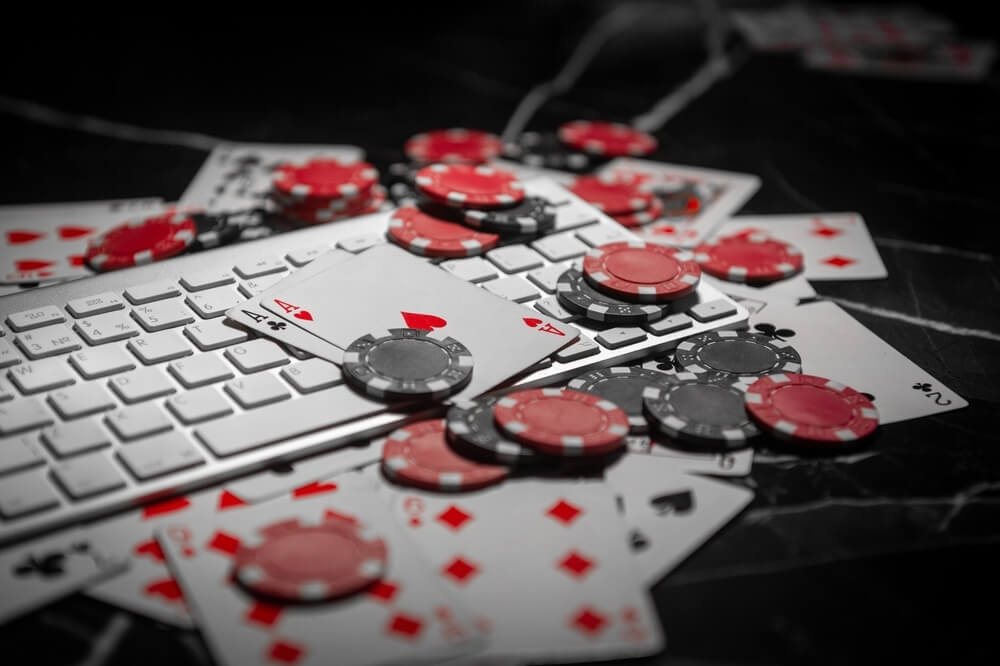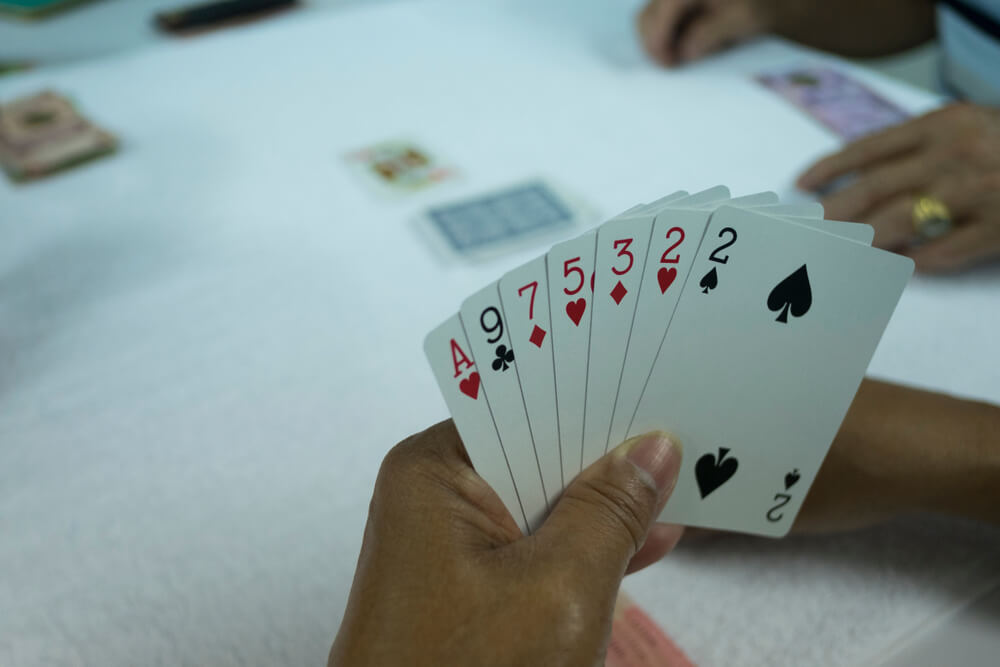The Ultimate Guide to Ace Pai Gow Strategy

You're about to dive into our all-encompassing Pai Gow guide, designed to equip you with confident playing tactics. We'll explore everything from the fundamentals to advanced techniques, ensuring you can maximize your success both online and at brick-and-mortar casinos.
- Tracing the Ancient Roots of Pai Gow
- How Sam Torosian Innovated Pai Gow Poker
- How House Edge Works in Pai Gow Poker
- How to Play Pai Gow Poker
- Basic 5 Card Poker Hands
- Navigating a Complete Round of Pai Gow Poker, Step by Step
- Optimal Pai Gow Strategy Based on Each Hand
- Bonus Bets
- Banking: Do it As Often as Possible
- Essential Rules for a Winning Pai Gow Experience
- Where to Play Pai Gow Poker Online
Tracing the Ancient Roots of Pai Gow

Originating in ancient China, Pai Gow can be traced back to or before the Song Dynasty. It's linked to other domino-based games and is the precursor to Western tile-based games. The name translates directly to 'make nine.'
In Pai Gow, 32 tiles are used. Players get four tiles to assemble two separate hands: a 'front' and a 'back' hand, each consisting of two tiles. Winning hinges on outdoing both the dealer's hands. Otherwise, a push occurs, which is quite frequent in this game.
A critical rule dictates that the back hand must outvalue the front one. Top hands stem from pairs, with special sets called 'Gong' and 'Wong' next in line. The rest are ranked by tile pips, counting only the final digit of the total. This mimics baccarat’s system where nine reigns supreme and zero trails behind.
How Sam Torosian Innovated Pai Gow Poker

From Blackjack to Video Poker: A Casino Games Overview have intriguing origin stories , and Pai Gow Poker is no exception.
In 1985, a Bell Card Club patron shared Pusoy, a 13-card poker game, with owner Sam Torosian. Players crafted three hands from their cards to outplay others, reminiscent of Chinese Poker.
Deeming Pusoy too slow for the American scene, Torosian created a faster, seven-card version featuring two hands to suit newcomers. Thus, Pai Gow Poker was born, rapidly gaining traction in Vegas and beyond.
Sadly, Torosian never patented his creation. Advised poorly by both a lawyer and poker expert Mike Caro, he missed out on licensing income that others, like the creators of Three Card Poker, have enjoyed.
How House Edge Works in Pai Gow Poker
All casino games have a built-in house edge, representing the percentage of wagered money that eventually enriches the casino. This translates to the return to player (RTP), reflecting the long-term recovery rate of each bet. Strategically astute players can curtail the house edge in games like blackjack and Pai Gow. In Pai Gow Poker, the base house edge sits around 2.51% with optimal strategies, albeit challenging to nail down. 'House way' strategies typically offer a 2.72% edge. When banking, a player can possibly drop this to 0.04%, with 0.25% using the house approach.
By adhering to strategy, you can diminish the house edge in Pai Gow Poker by up to 2.8%.
The essence of Pai Gow Poker is overcoming the dealer with both hands. It merges traditional Pai Gow hand-setting with hand rankings familiar to fans of Texas Hold’em or Caribbean Stud.
How to Play Pai Gow Poker

The game uses a 53-card deck, a standard set plus a joker. This wild card plays a role in completing straights, flushes, and straight flushes, or can be an ace.
Each hand begins with a mandatory bet. Players receive seven cards to arrange into a five-card back hand and a two-card front hand, ensuring the back hand is superior.
Post-hand setup, the dealer follows, arranging their cards into two hands using a strict 'house way' approach.
Comparative analysis pit player hands against the dealer’s. The five-card hands are akin to regular poker rules, with exceptions like five aces as the top hand, and an A-2-3-4-5 second-best straight considered 'ace-high.'
In two-card hands, only pairs or high cards count. Ties favor the dealer with an automatic win.
Victories occur if the player surpasses the dealer in both hands, earning even money on the bet minus a 5% commission. A win on one and a loss on another yields a push. Dealer victories on both hands result in a lost bet.
Players can act as bankers, taking turns around the table, including the dealer’s chance. As the banker, they play against everyone, securing losing bets and disbursing wins minus a 5% fee. Passing on being the banker is allowed.
Familiar from Texas Hold’em or Seven Card Stud, Pai Gow employs standard poker hand rankings. Better-ranked hands prevail for five-card hands. In two-card hands, only pairs or high cards are possible. If you're not up to speed, here's a ranked overview.
Basic 5 Card Poker Hands
Royal Flush: Ace through ten, same suit. how to play poker Straight Flush: Five one-suit, sequential cards.
| Hand | Cards |
|---|---|
Royal Flush |
Full House: Three identical-rank cards, a pair of another. |
Straight Flush |
Two Pair: A pair of one rank combined with another. |
Four of a Kind |
Four cards of the same rank |
Full House |
High Card: Hands lacking pairs, straights, or flushes. |
Flush |
Any five cards of the same suit |
Straight |
ABOUT US |
About Us |
Advertiser Disclosure |
Review System |
Pai Gow Poker unfolds with intuitive ease. Here’s a glimpse into each routine step of a Pai Gow hand. |
Authors |
Compare Casinos |
Contact |
Each round starts with a bet per table's set limits, followed by the dealer and players each receiving seven cards. |
Navigating a Complete Round of Pai Gow Poker, Step by Step
Players scrutinize their cards to lay out a five-card back hand and a two-card front hand. The back must rank higher.
LEARNING CENTRE
When ready, the dealer shows and arranges their cards per the 'house way' strategy, which may vary between casinos and online venues.
Guides
To win, players need to outmatch both dealer hands. A push occurs with one winning hand and one tied or losing to the dealer. Dealer universals or pushes result in losing bets.
Blog

Pai Gow Poker wins return even money minus a typical 5% casino fee.
Telegram
A pivotal Pai Gow strategy is mastering seven-card setups. This guide helps tailor your hand, whatever cards you're dealt.
Optimal Pai Gow Strategy Based on Each Hand
With three strong cards, place the second and third best in the low hand.
Join Our Telegram
For ace-high pairs, separate them, slotting the smaller pair below.
Never miss a top casino bonus!
Join Our Telegram
Split except with deuces. Keep both in the high hand, sit your next strongest cards below.
Search
For aces, play a high pair together up top, arranging the ace and the runner-up below. Otherwise, always split.
Search
Split these pairs, placing the higher in the superior hand.
EN
House all but the leading pair, which caps the low hand.
Our Complete Guide to Pai Gow Poker
Reunite your trios, save for three aces; play a pair high, add the other ace down low.
FR
Opt to divide full houses, housing trios high and pairs low. Possessing another pair keeps it in the upper hand, moving the better pair down.
Ed Scimia
Poker Hand Essentials: Mastering Through Understanding
Author
Only compartmentalize quads when placing high or ace-low.
Updated:
November 20, 2024
Detour quads as two pairs unless an ace embellishes the low hand.
How House Edge Works in Pai Gow Poker
Aces, Kings, Queens, Jacks in quads mandate division, dependent on spare pairs.
Widely embraced in casinos today, Pai Gow Poker stands as a favorite among players. Dive into our expert guide to hone your skills and elevate your gameplay.
The Ultimate Pai Gow Strategy Guide You Can’t Do Without
How to Play Pai Gow Poker
Step right into our detailed guide on Pai Gow, where we cover everything you need to confidently engage in a game of Pai Gow Poker. From understanding the basic rules to mastering the most effective strategies, we prepare you to achieve top results whether playing online or in a live casino.
Basic 5 Card Poker Hands
Uncovering the Ancient Roots of Pai Gow
Bonus Bets
Sam Torosian: The Brain Behind Pai Gow Poker
Mastering Pai Gow Poker: A Detailed Walkthrough of Every Round
Essential Rules for a Winning Pai Gow Experience

- Essential Rules to Keep in Mind When Playing Pai Gow
- With its origins stretching back to the Song Dynasty in China, Pai Gow is a historic game intertwined with other domino games. It has given rise to various Western tile games and translates directly to 'make nine.'
- Played with 32 tiles, Pai Gow involves players creating two hands from four tiles dealt: a 'front' and 'rear' hand. Victory is achieved by winning both hands against an opponent. A tie, known as a push, is a frequent outcome when players win on different hands.
Banking: Do it As Often as Possible
A crucial rule is ensuring the rear hand outranks the front. Pairs form the strongest hands, followed by special combos like 'Gong' and 'Wong.' Hands are then ranked by tile pip counts, where only the final digit matters—a system reminiscent of baccarat where a nine is superior.
Explore a World of Casino Games: From Blackjack to Video Poker Where to Play Pai Gow Poker Online In 1985, Sam Torosian, owner of Bell Card Club in Los Angeles, was introduced to Pusoy—a 13-card game akin to Chinese Poker. Thinking the game too slow for American preferences, Torosian innovated a streamlined version with seven cards, birthing Pai Gow Poker, which quickly gained traction in Las Vegas and beyond.